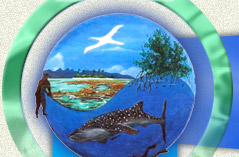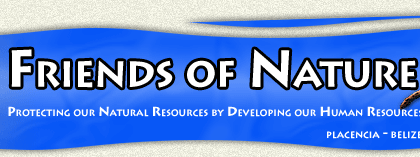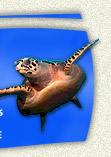History:
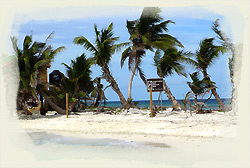 Friends of Nature is both old and new. It began in 1993 when a group of Placencia residents became concerned about human impacts on Laughing Bird Caye - a small and beautiful island about 12 miles offshore. Fishermen were camping there a lot and at the same time guides were starting to bring tourists for snorkeling. The citizens formed a committee called Friends of Laughing Bird Caye to look after the island and lobby for its protection. The committee made a major achievement in 1996 when the Minister of Natural Resources declared Laughing Bird Caye a National Park, thus making it a protected area. At that time, Friends organized a very effective voluntary ban on fishing and camping in the Park. Later, in 1996, Laughing Bird Caye National Park was one of seven marine protected areas along the Belize Barrier Reef to be declared a collective World Heritage Site by UNESCO (United Nations Educational, Scientific and Cultural Organization).
Friends of Nature is both old and new. It began in 1993 when a group of Placencia residents became concerned about human impacts on Laughing Bird Caye - a small and beautiful island about 12 miles offshore. Fishermen were camping there a lot and at the same time guides were starting to bring tourists for snorkeling. The citizens formed a committee called Friends of Laughing Bird Caye to look after the island and lobby for its protection. The committee made a major achievement in 1996 when the Minister of Natural Resources declared Laughing Bird Caye a National Park, thus making it a protected area. At that time, Friends organized a very effective voluntary ban on fishing and camping in the Park. Later, in 1996, Laughing Bird Caye National Park was one of seven marine protected areas along the Belize Barrier Reef to be declared a collective World Heritage Site by UNESCO (United Nations Educational, Scientific and Cultural Organization).
During this time, researchers and community members were also learning about an area on the reef called Gladden Spit where thousands of fishes were aggregating at predictable times to spawn. Fishermen had worked these aggregations heavily for many years. Whale sharks were also visiting the area in noticeable numbers, apparently feeding on fish spawn. Funding by the WWF (World Wildlife Federation) enabled the Fisheries Department and Friends of Laughing Bird Caye to conduct a series of consultations that led to the declaration of the Gladden Spit and Silk Cayes Marine Reserve in May 2000. At that time it was understood by both parties that Friends of Laughing Bird Caye would be given co-management of the Reserve.
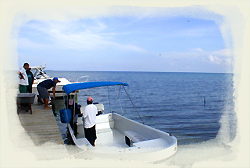 In 1998 Friends of Placencia Lagoon, another NGO was formed to bring attention to the lagoon behind the Placencia Peninsula. Many shrimp farms were being established on the shores of the lagoon and the Committee was concerned about the effects of the waste disposal on the life of the lagoon.
In 1998 Friends of Placencia Lagoon, another NGO was formed to bring attention to the lagoon behind the Placencia Peninsula. Many shrimp farms were being established on the shores of the lagoon and the Committee was concerned about the effects of the waste disposal on the life of the lagoon.
In the end, these two groups merged to form Friends of Nature, an NGO concerned with the state of all the ecosystems around Placencia and with responsibility for managing both Laughing Bird Cay National Park and Gladden Spit Marine Reserve.
Friends of Nature has made considerable progress in a short amount of time. Some of our achievements include:
- Trained and Equipped Rangers to Monitor Areas: Eight Rangers man a fleet of five boats to carry out their enforcement duties. Most have been trained as Fisheries Officers and all are PADI-certified. They are outfitted withthe basic gears required to do their work such as radios, dive gear, and GPS (Global Positioning Systems) units.
- Established a Ranger Station and Research Center: As a base for its operations out on the reef, FoN was able to acquire a majority share in Little Water Caye, a small island strategically placed equidistant from and close to both parks. FoN constructed a solid and beautiful building, a 300-foot pier, and a storeroom. Both reserves are well demarcated, and both have a full complement of mooring buoys.
On-Going Activities:
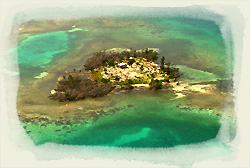 In addition, FoN has acquired the rights to Buttonwood Caye, a small island two miles Northwest of Gladden Spit, to develop as a Resource Center for fishermen and tour guides, a place where they can stay overnight and have access to proper facilities. FoN is presently seeking funding to complete the purchase. With the growth in tourism, traditional campgrounds for fishermen are getting more and more scarce. By acquiring Buttonwood Caye FoN is ensuring that local fishermen will always have a base for their operations. Buttonwood is also a convenient site to collect data about commercial fish landings in and around the Reserve.
In addition, FoN has acquired the rights to Buttonwood Caye, a small island two miles Northwest of Gladden Spit, to develop as a Resource Center for fishermen and tour guides, a place where they can stay overnight and have access to proper facilities. FoN is presently seeking funding to complete the purchase. With the growth in tourism, traditional campgrounds for fishermen are getting more and more scarce. By acquiring Buttonwood Caye FoN is ensuring that local fishermen will always have a base for their operations. Buttonwood is also a convenient site to collect data about commercial fish landings in and around the Reserve.
Good management requires feedback, and FoN has a broad array of routine monitoring protocols in place already. FoN is evaluating its own management effectiveness with a WWF- sponsored tool. In addition Friends has hired a technician to manage and process all of FoN's data including GIS mapping.
Gladden Spit | Lagoon | Laughing Bird | Enforcement
About Friends of Nature | Research | Protected Areas | Newsletter | Contact Us | 